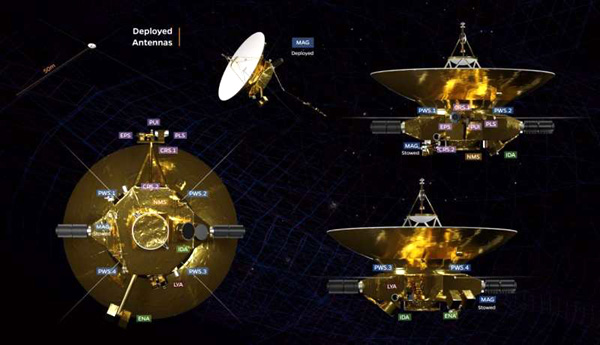
Johns Hopkins University Applied Physics Laboratory
Just thought I'd end this month with this Blog entry about the proposed Interstellar Probe project...whose Mission Concept Report (MCR) was completed by the Johns Hopkins University Applied Physics Laboratory (JHUAPL) last month and delivered to NASA for review.
According to the 498-page study, the Interstellar Probe would cost $1.7 billion (in fiscal year 2025 dollars), with an additional $230 million per decade for operations. This mission is designed to last at least 50 years as it ventured out into the Local Interstellar Medium...with the spacecraft exiting our solar system's heliosphere within 15 years (by comparison, the twin Voyager probes took at least 36 years to enter interstellar space). The cost does not include the price of the Space Launch System (SLS) rocket that the robotic explorer would use to depart from Earth.
According to the MCR, the Interstellar Probe would launch in the mid-2030s—flying at a speed of over 37,000 miles (60,000 kilometers) per hour as it departed the Earth-Moon system. It would use Jupiter as a gravitational assist, instead of utilizing the faster but riskier Oberth maneuver around the Sun. Depending on the launch date, the Interstellar Probe can fly past one of 10 Kuiper Belt Object (KBO) candidates...three of them being 225088 Gonggong, 90482 Orcus and 50000 Quaoar.
[The Interstellar Probe would need to wait till 2040 to launch if it were to head to Quaoar. I prefer that the spacecraft travels to Gonggong or Orcus instead (if those KBOs can be reached much sooner), if that were the case.]
I am completely stoked for the Interstellar Probe...but there are two factors that preclude NASA from considering this mission for development right now: 1.) Waiting for SLS to fly on its first mission—Artemis 1 (which won't lift off till early summer at the latest)—as it is the launch vehicle of choice by JHUAPL, and 2.) Waiting for the National Academy of Sciences (NAS) to publish its 2024-2033 Solar and Space Physics Decadal Survey, which won't be released till 2024.
It's going to be tough waiting two years for the decadal survey to be unveiled (and see if the Interstellar Probe is recommended for flight by the NAS)...but even then it will be up to NASA to decide on whether such an exciting project, whose mission beyond our solar system will span generations, is approved for funding. Assuming that the SLS rocket flies for at least a decade despite the impending arrival of SpaceX's Starship Super Heavy vehicle, it would be a waste not to take advantage of SLS's lifting capabilities and loft such an intriguing spacecraft out into the cosmos.
Again, we'll have to wait till 2024 to find out. Ad astra.
The folks doing a study on the Interstellar Probe mission at Johns Hopkins University specifically want SLS to fly this spacecraft too.
— Richard Par (@RichTPar) July 24, 2021
SLS supposedly can provide the right speed to allow the probe to reach interstellar space in 15 years while accurately taking solar wind data. pic.twitter.com/8XUmVMptdB
SLS w/ Block 2 booster, EUS, ICPS and an interstellar probe pic.twitter.com/M7BABt5rar
— Andrew (@Cosmic_Andrew1) February 1, 2022

No comments:
Post a Comment